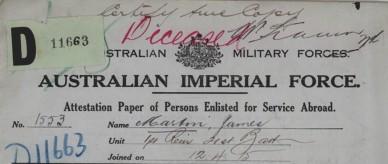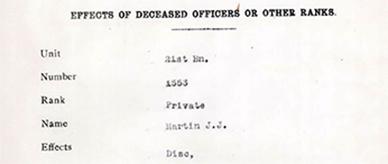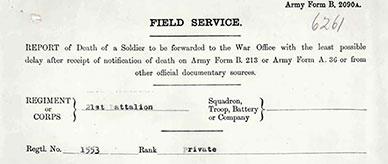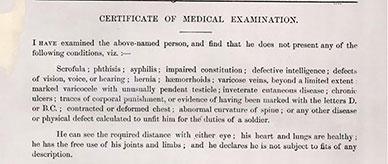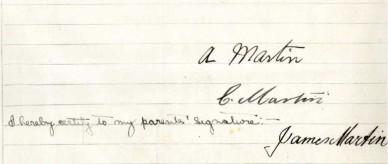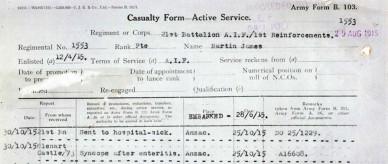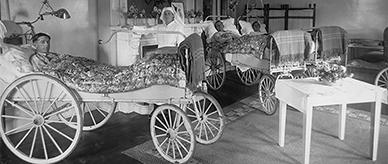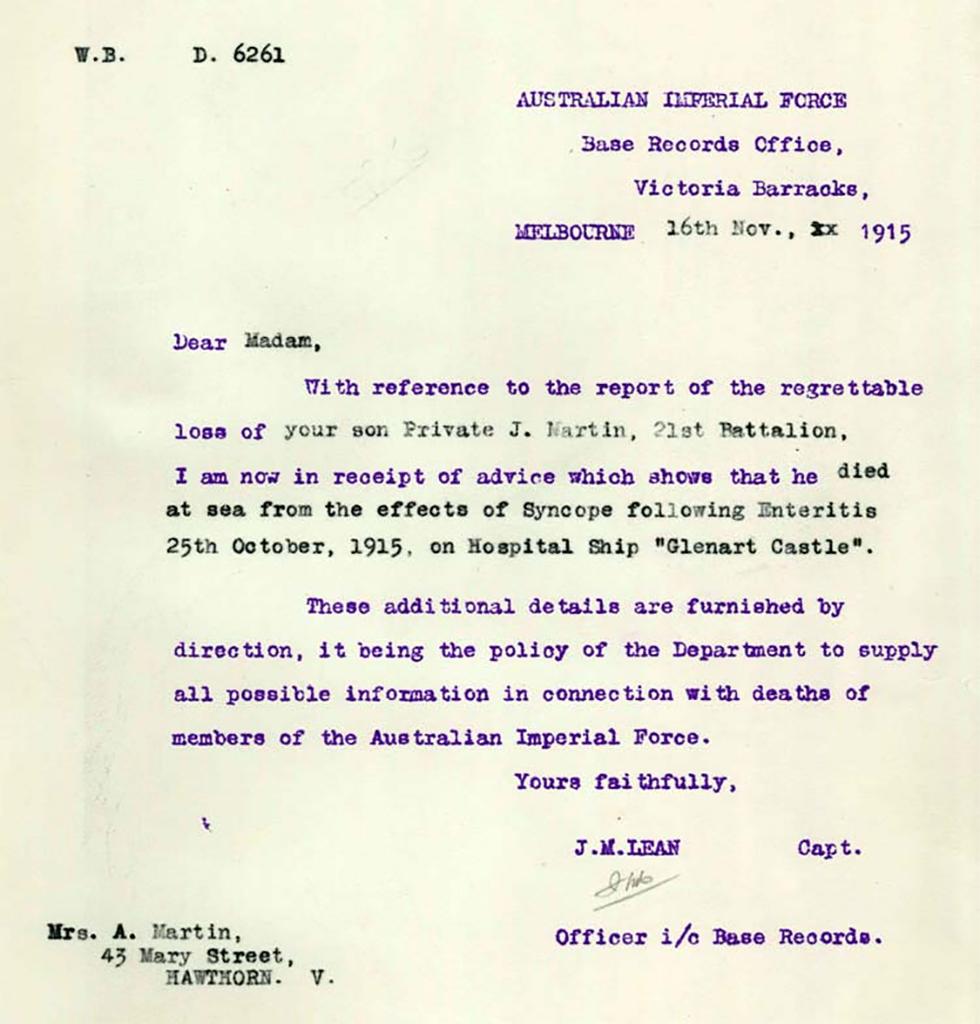


Transcript
[Letter is typed primarily in blue ink, with additions in black ink. All black ink sections are marked below with 'black' and 'end black'.]
[Black] W.B. D. 6261 [End black]
AUSTRALIAN IMPERIAL FORCE
Base Records Office,
Victoria Barracks,
MELBOURNE [black] 16 Nov., xx [end black] 1915
Dear [black] Madam, [end black]
With reference to the report of the regrettable loss of [black] your son Private J. Martin, 21st Battalion. [end black]
I am now in receipt of advice which shows that he [black] died at sea from the effects of Syncope following Enteritis 25th October, 1915, on Hospital Ship "Glenart Castle". [end black]
These additional details are furnished by direction, it being the policy of the Department to supply all possible information in connection with deaths of members of the Australian Imperial Force.
Yours faithfully,
J.M.Lean Capt.
J. Lean [handwritten signature]
Officer i/c Base Records.
[Black, addressed to:] Mrs. A. Martin,
43 Mary Street,
HAWTHORN. V. [end black]
About this record
This is a letter sent to Amelia Martin giving details of the death of her only son, Private James Charles (Jim) Martin, at Gallipoli. The cause of death is given as 'Syncope following Enteritis': a coma caused by typhoid or a similar major bacterial infection of the lower intestine.
James Martin’s story
Private James Martin (Service Number 1553) is believed to be the youngest Australian to die on active service. At the time of his death, the army was under the impression that he was 18 1/2 years old. In fact, he was only 14 years and 9 months old.
Martin was born on 3 January 1901 and enlisted in the Australian Imperial Force in April 1915, three months after his 14th birthday. At his enlistment, he brought with him a three-line statement of consent signed by his mother and father. The Martin family was strongly opposed to his enlistment, but he forced them to agree by stating he would join up under a false name if they did not consent.
Martin landed at Gallipoli on 8 September 1915 as a member of the first reinforcements of the 21st Battalion. In August that year, a huge epidemic of diarrhea caused by enteritis had broken out at Gallipoli, brought about by appalling sanitation and a huge infestation of flies. In the week before Martin landed, 7.5% of the Anzac forces had been evacuated sick. Of those remaining, 78 per cent had diarrhoea.
Of the 8709 Australian fatalities at Gallipoli, 665 died of disease. Martin was one of them. On 25 October 1915, less than 2 months after landing, he was evacuated by barge to a hospital ship anchored off Gallipoli. He died the same day.
Acknowledgments
Learning resource text © Education Services Australia Limited and the National Archives of Australia 2010.
Related records
Related themes
Need help with your research?
Learn how to interpret primary sources, use our collection and more.

